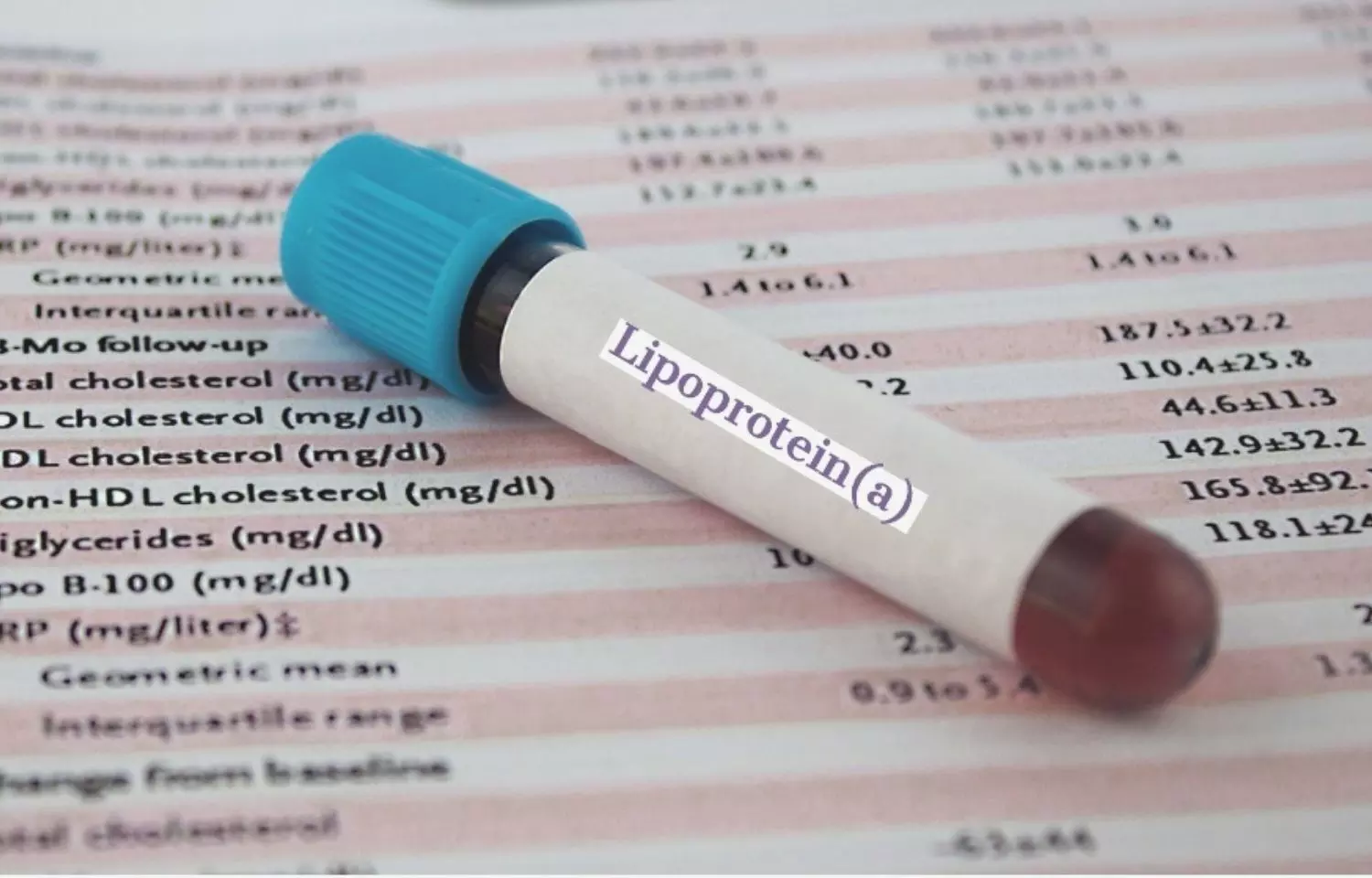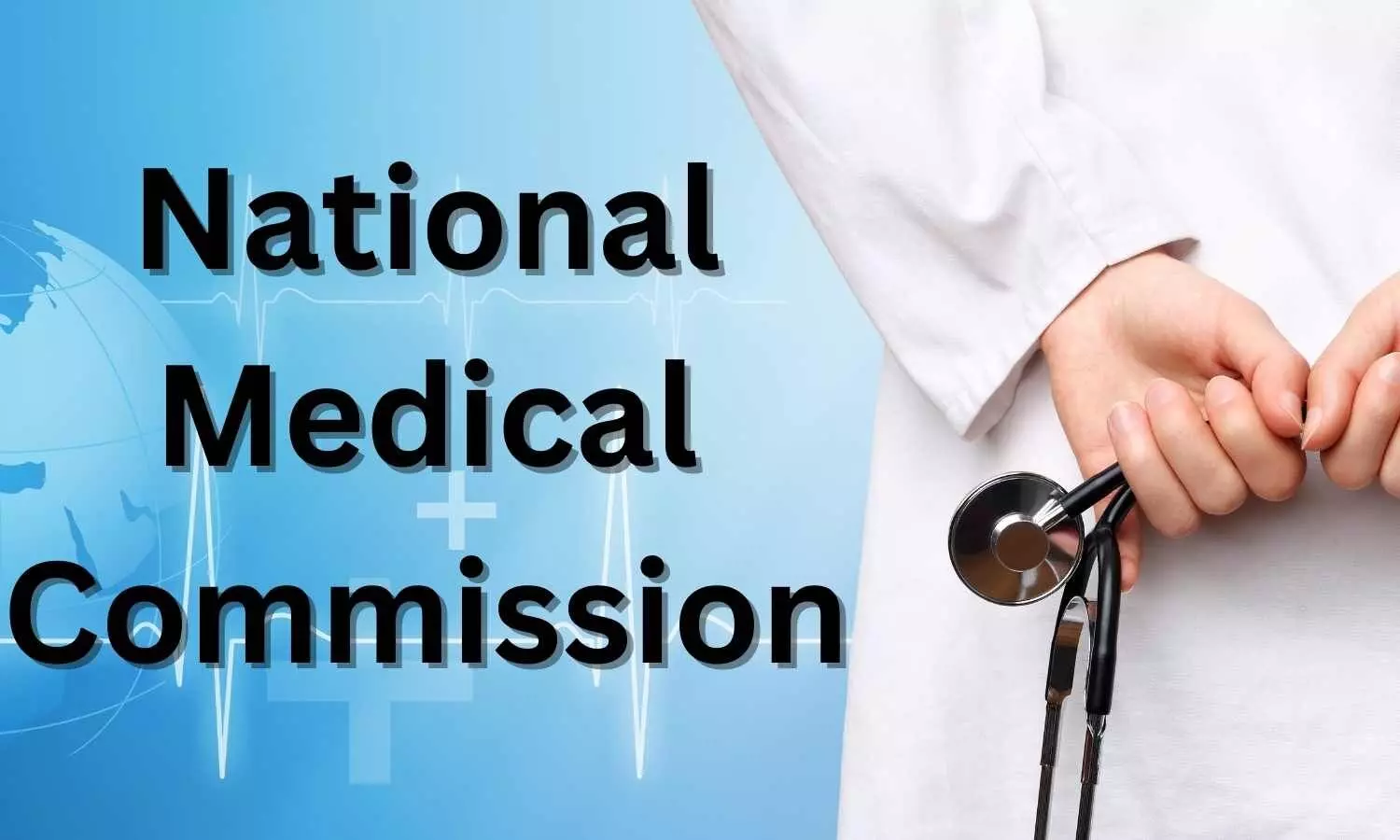Study reveals potential to reverse lung fibrosis using the body’s own healing technique
Powered by WPeMatico
Powered by WPeMatico
Powered by WPeMatico

Mumbai: Global pharma major Lupin Limited has announced that the
United States Food and Drug Administration (U.S. FDA) has completed a GMP Inspection of its API
manufacturing facility located at Dabhasa, India.
The inspection was conducted from April 8 to April
12, 2024 and concluded with no observations.
“We are pleased to announce the successful completion of the U.S. FDA inspection of our Dabhasa
facility,” said Nilesh Gupta, Managing Director, Lupin. “This accomplishment underscores our
unwavering dedication to maintaining the highest standards of quality and compliance in all aspects of
our operations. This reaffirms our pursuit of excellence in delivering high-quality, affordable healthcare
for all.”
Read also: Lupin names Dr Ranjana Pathak as Chief Quality Officer
Lupin is an innovation-led transnational pharmaceutical company headquartered in Mumbai, India. The
Company develops and commercializes a wide range of branded and generic formulations, biotechnology
products, and APIs in over 100 markets in the U.S., India, South Africa, and across the Asia Pacific (APAC), Latin
America (LATAM), Europe, and Middle East regions.
The Company specializes in the cardiovascular, anti-diabetic, and respiratory segments and
has a significant presence in the anti-infective, gastro-intestinal (GI), central nervous system (CNS), and
women’s health areas. The
company invested 7.9% of its revenue in research and development in FY23.
Lupin has 15 manufacturing sites, 7 research centers.
Read also: Lupin unveils first generic version of Oracea in US
Powered by WPeMatico

Hyderabad: In a significant recognition that highlights the growing influence of Indian surgeons on the global stage, Dr Lokeswara Rao Sajja, renowned Cardiothoracic Surgeon becomes the fourth Indian cardiothoracic surgeon to be featured in the American Association for Thoracic Surgery (AATS) Member Spotlight.
At the heart of Dr Sajja’s illustrious career lies a legacy of groundbreaking achievements and pioneering contributions that have earned him a prominent place in the AATS Member Spotlight. As the first cardiothoracic surgeon practising in India to be featured in this esteemed platform, Dr Sajja’s recognition underscores his work’s global impact and his invaluable role in shaping the future of cardiothoracic surgery.
Dr Sajja’s ascent to the ranks of the AATS exemplifies a rare feat, as he becomes only the fourth cardiothoracic surgeon from India to achieve this prestigious honour since the association’s inception. His remarkable journey is a testament to his unwavering commitment to excellence and his tireless pursuit of innovation in the field of cardiothoracic surgery.
Also read- Renowned Virologist Dr Gagandeep Kang Bags John Dirks Canada Gairdner Global Health Award 2024
Established in 1917, the American Association for Thoracic Surgery (AATS) has been a symbol of excellence in cardiothoracic surgery. With over 1,500 (7 Surgeons from India) members across 46 countries, AATS stands as a testament to the commitment of its members to advancing the treatment of cardiothoracic diseases globally.
In recognition of exceptional skill and dedication, AATS introduced the Member Spotlight initiative last year. This platform highlights individuals who have made significant contributions to the field. During the AATS 103rd Annual Meeting held from May 6 to 9, 2023, in Los Angeles, California, experts in thoracic surgery gathered to exchange knowledge and shape the future of the field.
The event featured renowned speakers and moderators, including Sir Magdi Yacoub, Shinichi Fukuhara, Ismail El-Hamamsy, and others. Moderated by experts like Ismail El-Hamamsy from Mount Sinai Hospital, the event covered a range of topics in adult cardiac surgery.
Among those recognized is Dr Lokeswara Rao Sajja, an esteemed member from India.
Throughout his tenure as an AATS member, Dr Sajja has distinguished himself through his prolific contributions to the discourse and practice of cardiothoracic surgery. His presentations, discussions, and publications at the AATS Annual Meetings and the Journal of Thoracic and Cardiovascular Surgery (JTCVS) have not only advanced the boundaries of knowledge but have also served as catalysts for innovation within the field.
He attained his MBBS from Guntur Medical College, Guntur, AP, followed by MS in General Surgery from JIPMER, Pondicherry, and M.Ch in Cardiothoracic and Vascular Surgery from the All-India Institute of Medical Sciences (AIIMS), New Delhi.
As a pioneer and innovator in cardiothoracic surgery, Dr Sajja’s dedication and expertise continue to inspire excellence within the global medical community. His unwavering commitment to advancing the frontiers of cardiothoracic surgery serves as a beacon of hope for patients worldwide, and his induction into the AATS Member Spotlight is a testament to the profound impact of his contributions on the field and beyond, reports IANS.
According to a statement issued by AATS, Dr Lokeswara Rao Sajja is a pioneering Cardiothoracic Surgeon in India, rising from humble beginnings in Andhra Pradesh. His educational journey took him through prestigious institutions, culminating in advanced cardiovascular training under the guidance of Prof Denton A Cooley at the Texas Heart Institute in the USA.
Dr Sajja’s impact on Cardiothoracic Surgery is profound. He founded the Society of Coronary Surgeons, dedicated to advancing coronary surgery in India. As Chairman of the Sajja Heart Foundation, he received recognition as a Scientific and Industrial Research Organization (SIRO) by the Government of India in 2019.
His innovative spirit led to the development of a mechanical prosthetic heart valve, eliminating the need for long-term anticoagulation (US and Indian patents awarded). He also designed the Mammary Artery Support Platform (MASP) to enhance BITA usage in CABG surgery. Dr Sajja’s surgical expertise spans around 20,000 open heart operations, and he spearheads multicenter randomized trials in Cardiac Surgery in India.
His “PROMOTE Patency Study” gained global recognition as India’s first multicenter randomized controlled trial in cardiac surgery. He currently leads the “PREDICT Study” with support from the Indian Council of Medical Research. His influence transcends borders, as he actively participates in Multi-Centre International trials, contributing to global advancements in cardiac surgery.
An active member of prestigious international societies, including AATS, STS, EACTS, and ASCVS, Dr Sajja has presented numerous original research papers at international meetings. He has authored over 110 articles in peer-reviewed journals, serves as a guest reviewer for prominent journals, and holds editorial roles in respected publications.
Dr Sajja’s journey from a rural village to a trailblazing Cardiothoracic Surgeon is a testament to his dedication, innovation, and commitment to advancing cardiac care and research. As the President of the Indian Association of Cardiovascular-Thoracic Surgeons (IACTS) 2023, he continues to shape the future of cardiac surgery, benefiting countless patients.
Also read- Renowned Ophthalmologist Dr Atul Kamath Bags Ophthalmic Heroes Of India Award
Powered by WPeMatico

India: A recent study published in Cureus has shown the usefulness of neutrophil-to-lymphocyte ratio (NLR) in the management of type 2 diabetes mellitus (T2DM) and in predicting long-term complications.
The researchers revealed the equivalent efficacy of NLR to glycated hemoglobin (HbA1c) in predicting glycemic control. They suggest that since diabetes affects different body organs, NLR evaluation probably predicts inflammation.
Diabetes is a chronic disease that causes blood glucose dysregulation. Type 2 diabetes could result in long-term inflammatory conditions that impact different body organs. Despite the availability of diagnostic markers like HbA1c for T2DM, it is essential to find an appropriate marker that could predict long-term complications.
Against the above background, Qader A. Jalily, Microbiology, Mahavir Institute of Medical Sciences, Vikarabad, India, and colleagues evaluated the potential role of neutrophil-to-lymphocyte ratio in predicting disease progression and treatment responses.
For this purpose, the researchers conducted a case-control study among 160 T2DM patients with 132 non-diabetic persons. Blood samples were collected from each participant and were processed for HbA1c, hemoglobin, ferritin, iron, and complete blood picture (NLR).
The researchers reported the following findings:
In conclusion, despite the availability of traditional markers like blood glucose and HbA1c to diagnose type 2 diabetes patients, they may be inappropriate to assess the overall health and predict long-term T2D complications.
The study found a significant correlation between HbA1c and NLR among T2DM patients. Moreover, there was a significant variation in NLR between T2DM patients and non-diabetic persons.
“The study results support the role played by the NLR to manage T2DM patients,” the researchers wrote.
“Alternatively, a more comprehensive evaluation of patients with type 2 diabetes is possible with NLR estimation. Unlike the traditional biomarkers, NLR could be used to predict potential complications among T2DM patients.”
Reference:
Mohammed A, Khaleel M, R. M. P, et al. (February 29, 2024) Neutrophil-to-Lymphocyte Ratio as a Potential Biomarker to Managing Type 2 Diabetes Mellitus and Predicting Disease Progression. Cureus 16(2): e55227. doi:10.7759/cureus.55227
Powered by WPeMatico

A recent comprehensive review highlights the potential health benefits of salt substitution for cardiovascular outcomes. This research found that replacing regular salt with substitutes could lead to a reduction in mortality and major cardiovascular events among the high-risk populations. The crucial findings were published in the Annals of Internal Medicine.
The study synthesized data from 16 randomized controlled trials (RCTs) and focused on the effects of salt substitutes on adults for durations of six months or longer. The study data were primarily sourced from databases such as PubMed, EMBASE, Cochrane CENTRAL and CINAHL to compile the most relevant information up to the date of search completion.
Also, the meta-analysis showed that salt substitutes might reduce the risk of all-cause mortality by 12% and cardiovascular mortality by 17% according to the data from trials that involved a total of 27,710 and 25,050 participants, respectively. Most of the studies reviewed were conducted in China or Taiwan, focusing primarily on older populations with an average age of 62 years and higher-than-average cardiovascular risks. The potential reduction in major cardiovascular events (MACE) was observed with very low certainty.
The evidence highlighted an increase in the risk of serious adverse events associated with salt substitutes which was not statistically significant. This aspect underlines the need for careful consideration in balancing the benefits and potential risks of salt substitution among different global populations.
The study employed the GRADE (Grading of Recommendations Assessment, Development and Evaluation) system to assess the certainty of the evidence, which generally ranged from low to very low across different outcomes. This necessitates the need for further high-quality studies to confirm these potential benefits and establish clearer guidelines for their application.
The dominance of the data by a single, large RCT and the concentration of studies in Asian countries with high cardiovascular risk profiles pose significant limitations to the generalizability of this study. It indicates that while the initial results are encouraging for the populations in China or Taiwan which were studied.
While salt substitution appears to be a promising strategy for improving cardiovascular health outcomes (reducing mortality rates among high-risk groups), further research is mandatory to fully understand its benefits and risks across different populations and this will encourage to consider the context of broader dietary and health management strategies.
Source:
Greenwood, H., Barnes, K., Clark, J., Ball, L., & Albarqouni, L. (2024). Long-Term Effect of Salt Substitution for Cardiovascular Outcomes. In Annals of Internal Medicine. American College of Physicians. https://doi.org/10.7326/m23-2626
Powered by WPeMatico

A new study revealed that Zerlasiran is not just safe and tolerable but also effective in substantially reducing the levels of lipoprotein(a) [Lp(a)] which is a key factor in the development of atherosclerotic cardiovascular disease (ASCVD) and calcific aortic stenosis. The key findings of this study were published in the Journal of American Medical Association.
This comprehensive study was conducted across several countries including the US, the Netherlands, the UK and Australia from November 2020 to August 2023. This research enrolled healthy participants as well as the patients with stable ASCVD, all of whom expressed Lp(a) serum concentrations more than 150 nmol/L. This diverse group underwent treatment through randomized doses of Zerlasiran or placebo by exploring both single and multiple-dose administrations to evaluate the safety, tolerability and impact of the drug on Lp(a) levels.
Zerlasiran operates by targeting and suppressing the hepatic synthesis of apolipoprotein(a), thereby lowering the circulating levels of Lp(a). The outcomes of this study highlights no serious adverse events among the participants. Also, the drug demonstrated a remarkable ability to lower Lp(a) concentrations with the most notable reductions observed in the multiple-dose groups. After two doses, the participants saw a reduction in Lp(a) levels by up to 99% from baseline in some dosage groups that was sustained significantly over time.
These findings are crucial despite considering the absence of approved pharmacological treatments to address high Lp(a) levels which is a hereditary condition notoriously difficult to manage through lifestyle changes or existing cholesterol-lowering medications. The success of this study signals Zerlasiran as a effective drug for individuals with increased Lp(a) to be a potentially transformative addition to the arsenal against ASCVD and calcific aortic stenosis.
The study highlighted the importance of this advancement by illuminating the ability of Zerlasiran to significantly reduce Lp(a) levels with infrequent dosing that could revolutionize the approach of prevention and management of the cardiovascular disease. Zerlasiran continues through the pipeline of clinical trials and regulatory review which helps in resolve the anticipation of the wide-reaching implications of this new treatment. If approved, Zerlasiran could significantly impact the prevention of cardiovascular disease by marking a critical shift in the treatment strategy of high-risk individuals throughout the globe.
Source:
Nissen, S. E., Wolski, K., Watts, G. F., Koren, M. J., Fok, H., Nicholls, S. J., Rider, D. A., Cho, L., Romano, S., Melgaard, C., & Rambaran, C. (2024). Single Ascending and Multiple-Dose Trial of Zerlasiran, a Short Interfering RNA Targeting Lipoprotein(a). In JAMA. American Medical Association (AMA). https://doi.org/10.1001/jama.2024.4504
Powered by WPeMatico

New Delhi: While answering the Frequently Asked Questions (FAQs) regarding the Postgraduate Medical Education Regulations (PGMER) 2023, the National Medical Commission (NMC) recently clarified that once permitted, the concerned postgraduate medical course shall be considered as recognised and therefore, the “seats permitted will be considered as recognised seats for registration of the degree awarded.”
Postgraduate Medical Education Board (PGMEB) of the NMC stated this while providing clarification regarding the doubts and queries raised by various stakeholders regarding the PGMER 2023.
Medical Dialogues had earlier reported about the final Post-Graduate Medical Education Regulations, 2023 (PGMER 2023), which laid down the rules and regulations regarding admission, counselling, and other details related to the postgraduate medical courses.
Answering the question of whether the college is required to apply for recognition of PG seats, the Commission clarified, “As per PGMER-2023, once permitted, the course for the qualification will be considered recognised and seats permitted will be considered as recognised seats for registration of the degree awarded. Medical colleges/institutions running such courses will be considered as accredited medical colleges/institutions for the said course of qualification. And all permitted seats will be considered as recognised seats.”
Also Read: How many leaves allowed for PG medical students? NMC specifies in PGMER FAQs
“Therefore, medical colleges/institutions need not apply for recognition of PG course. Colleges/institutions shall submit an Annual Self-Declaration as per the requirement of MSMER-2023 regulations. For the current year, the Post-graduate Medical Education Board (PGMEB) will soon issue a public notice for the medical colleges/institutions to submit their Annual Self-Declaration for the year 2023 (01.01.2023 to 31.12.2023),” it further mentioned.
Addressing the issue of permission and recognition, Chapter III of PGMER 2023 mentions, “Once permitted, the course for the qualification will be considered recognised and seats permitted will be considered as recognised seats for registration of the degree awarded. Medical colleges/Institutions running such courses will be considered as Accredited Medical colleges/Institutions for the said course of qualification.”
The requirement for getting recognised by NMC is no longer applicable for the undergraduate medical seats as well. Releasing the Minimum Standard Requirements (MSR) 2023 regulations for UG medical courses, NMC removed the concept of permitted vs recognised medical seats. Therefore, as per the existing rules, degrees obtained by MBBS students after completion of their medical courses shall automatically be considered to be recognised.
Medical Dialogues had been reporting about the troubles faced by students across the country with the pending recognition from the NMC. The absence of recognition for the permitted seats used to cause trouble for the MBBS graduates, who would face problems in obtaining permanent registration in the absence of recognition for their respective batches. They were unable to initiate their medical practice or participate in the counselling process for postgraduate medical education as well. In the case of PG medical students, lack of recognition used to create trouble for the doctors to get their additional qualifications registered.
To view the FAQs issued on PGMER 2023, click on the link below:
https://medicaldialogues.in/pdf_upload/faqs-on-pgmer-2023-236046.pdf
Also Read: PGMER 2023: PG Medicos must Fulfill these Conditions to Appear in Final Exam, Details
Powered by WPeMatico

New Delhi: India has made tremendous progress in the elimination of Tuberculosis from the country, the treatment success rate surged to 86.9 per cent by December 2023, marking the highest rate in nine years, according to sources.
Under the leadership of Prime Minister Narendra Modi, the Government of India is aggressively pursuing the elimination of TB from the country by 2025, five years ahead of the global sustainable development goals’ 2030 deadline related to TB.
According to the sources, however, there was a marginal increase to 85.5 per cent in 2022. “Over the last 9 years, despite one-third of notifications coming from the private sector, the programme was able to sustain a treatment success rate of above 80 per cent. In 2021, the success rate had reached 84 per cent and in 2022, it marginally increased to 85.5 per cent,” sources told ANI.
Also Read:Karnataka Health Minister writes to Centre seeking supply of anti-TB drugs
The Union Ministry of Health and Family Welfare spearheaded the national TB Elimination Programme with five key objectives: early diagnosis, prompt treatment with quality drugs, engagement with patients seeking care in the private sector, prevention strategies including contact tracing in high-risk and vulnerable populations, airborne infection control, and multi-sectoral response to address social determinants.
Under the National Strategic Plan for TB Elimination, over 1.4 billion people live in more than 800 districts and reporting units and are responsible for carrying out the Government of India’s five-year National Strategic Plans for TB Elimination along with the States/UTs.
According to an ANI report, The National Strategic Plan for TB Elimination was launched to achieve the target of ending TB by 2025 in mission mode. It is a multi-pronged approach that aims to detect all TB patients, with an emphasis on reaching TB patients seeking care from private providers and undiagnosed TB in high-risk populations.
“The programme has been implementing the four strategic pillars of Detect-Treat-Prevent-Build (DTPB) of the National Strategic Plan 2017-2025, which has led to the scaling up of free, high sensitivity diagnostic tests and algorithms and ensuring free TB drugs for all TB cases,” said a source with knowledge of the National Strategic Plan 2017-2025.
Powered by WPeMatico

Philadelphia: Researchers from Children’s Hospital of Philadelphia (CHOP) have found in a new research that a SARS-COV-2 infection likely does not increase the risk of asthma development in pediatric patients.
The findings of study were published in the journal Pediatrics.
Respiratory viral infections early in life are risk factors for asthma. Since the SARS-COV-2 virus can cause severe lung inflammation and prolonged respiratory symptoms in certain patients, many families were concerned whether COVID-19 might trigger an asthma diagnosis in their children. CHOP established a team to further evaluate these concerns.
More than four years have passed since initial infections were reported in the United States, with testing for COVID-19 performed frequently at the beginning of the pandemic. These circumstances made for the perfect set of circumstances for a large retrospective cohort study.
“During the early days of the pandemic, we could isolate the effects of COVID-19 from other viruses and follow these patients long enough to observe the onset of asthma,” said first study author James P. Senter, MD, MPH, an attending physician in the Department of Pediatrics at CHOP. “We were also testing so frequently that we had a built-in control group to compare asthma symptoms and whether COVID-19 was a critical factor.”
This retrospective cohort study included more than 27,000 pediatric patients who received polymerase chain reaction (PCR) testing for SARS-COV-2 between March 1, 2020, and February 28, 2021. Patients were followed over an 18-month period.
The analysis found that testing positive for SARS-COV-2 had no significant effect on the likelihood of a new asthma diagnosis. However, children with known risk factors for developing pediatric asthma, such as race, food allergies, allergic rhinitis (or hay fever), and preterm birth – were more likely to associate with new SARS-COV-2 diagnoses.
Since the study focused solely on pediatric patients, not adult patients, more research will need to be done to assess patients at different ages and at longer intervals to further confirm there is no relationship between SARS-COV-2 and the development of asthma. Although new variants have emerged since the study was conducted, many of the fundamental elements of the original virus, which seem to reduce the allergic response produced in infected patients, have remained intact in current variants.
“This well-powered study reaffirms risk factors we know contribute to asthma development and provides clinically useful information to pediatricians and providers on the absence of risk of developing asthma as a result of COVID-19,” said senior study author David A. Hill, MD, PhD, an attending physician with the Division of Allergy and Immunology at CHOP. “We are hopeful that this study will put to rest an outstanding question on the minds of many their families.”
References: James P. Senter, MD, MPH; Laura K. Aisenberg, MD, PhD; Jesse W. Dudley, MS; Xianqun Luan, MS; Jing Huang, PhD; Chén C. Kenyon, MD, MSHP; David A. Hill, MD, PhD Pediatrics e2023064615. https://doi.org/10.1542/peds.2023-064615
Powered by WPeMatico
